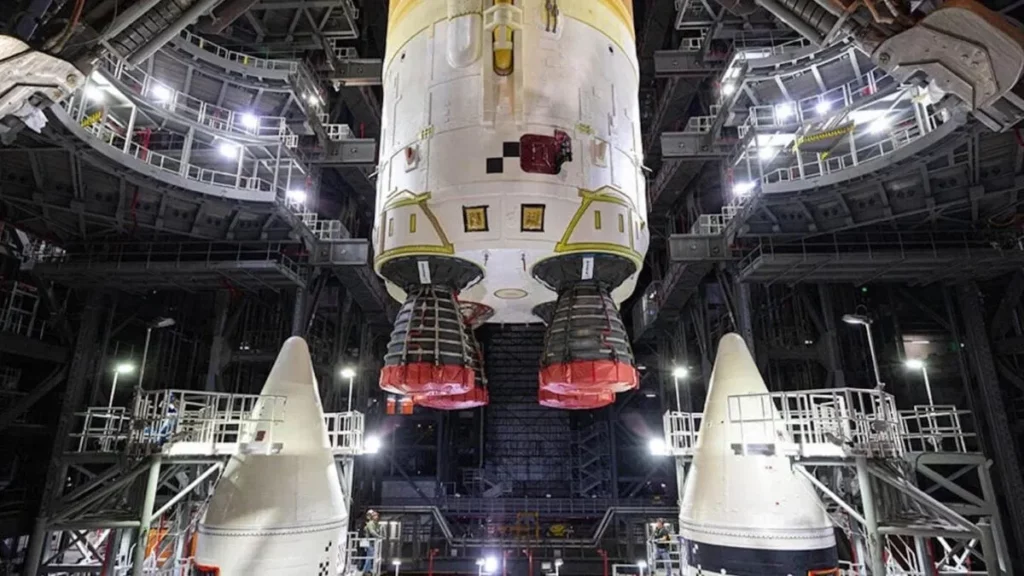
Rocket Engines That Flew 22 Space Shuttle Missions Are Ready for NASA’s Next Moon Mission
NASA has successfully completed the RS-25 engine checkout tests at Kennedy Space Center in Florida, clearing the way for the Artemis 2 mission. The engines that flew 22 space shuttle missions are now ready to power the next-generation Space Launch System (SLS) rocket.
The four RS-25 engines will be integrated into the SLS core stage and solid rocket boosters, marking a significant milestone in the agency’s quest to return humans to the lunar surface by 2025. The successful test demonstrates that NASA has made tremendous progress in revitalizing its legacy infrastructure from the Space Shuttle program, ensuring seamless communication between the SLS core stage and engines.
Interestingly, three of the four engines being used for Artemis 2 have already flown a combined 22 missions as part of NASA’s iconic Shuttle program. One engine will make its debut on this upcoming mission.
“We’ve learned during the Space Shuttle program to listen to the engines,” Bill Muddle, RS-25 field engineer, stated in a release. “The engines talk to you, and you have to listen and understand what they are telling you to ensure they operate properly. They will tell you if they’re in ill health and need to be tweaked or if a component is having an issue and needs to be replaced.”
NASA’s Space Launch System (SLS) rocket integrated with solid rocket boosters at the Vehicle Assembly Building at NASA’s Kennedy Space Center.
The SLS system, once again, uses components from the Shuttle program to improve affordability. NASA has already awarded four contracts to L3 Harris Technologies’ Aerojet Rocketdyne division for the production of the RS-25 engines, reflecting the agency’s reliance on legacy infrastructure.
NASA is poised to send its next crewed mission, Artemis 2, which will take astronauts to the lunar environment for the first time in over 50 years.
Source: gizmodo.com

